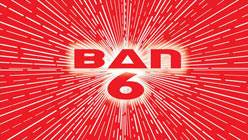According to its official poster, Bay Area Now 6 is an early ’90s rave. According to curators Betti-Sue Hertz and Thien Lam, Yerba Buena Center for the Arts’ sixth triennial presents a group of artists influenced by various Bay Area geographies, histories, and potential futures. As might be expected, this catch-all description does little to bring the show together as a whole. Instead, visitors must find threads of commonality between three or four artists at a time, creating small groupings within the galleries of YBCA. Recommended keywords for constructing your own groupings include infomercials, Romanticiscm, and the readymade.
BAN6 features 18 artists and art collectives in total, three less than the previous triennial. Though fewer artists means more space for a broader range of work, in terms of physical spread, most installations remain markedly separate from one another. In the show’s largest room, three box-like structures house works by Brion Nuda Rosch, Rio Babe International and Chris Sollars, eliminating lines of sight that might otherwise allow the space to feel more cohesive.
The most unified moment in BAN6 comes in what I’ll call the ‘dark gallery.’ This grouping includes the work of Sean McFarland, Ranu Mukherjee, Weston Teruya, and Richard T. Walker. Their works demonstrate a shared interest in landscape: how it is used, divided, understood, and traversed. While Amy Balkin’s LAND: Five Case Studies addresses this same topic, the more nuanced interpretations presented in the dark gallery collectively capture the imagination and invite prolonged viewing.

Sean McFarland
Mukherjee’s “color of history — sweating rocks” is a standout. In this mesmerizing silent video, computer-animated and scanned images move across the frame languidly. Desert rocks meld into Bedouin dwellings, their tapestries blowing in a strong wind. Over this scene, black liquid spills without regard to gravity as small white particles contract and expand. The video brings to mind seepages, entropy, and the scatterings of a people into a diaspora.




